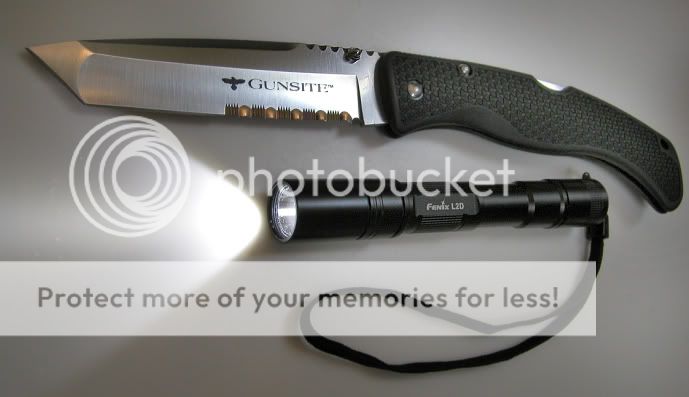Confederate
Enlightened
- Joined
- Jun 22, 2006
- Messages
- 360
Well, given the dismal performance of AA alkaline batteries with the Fenix L2D CE, I'm wondering now whether any LED light will run well with alkalines or if it's only the regulated lights that have problems.
For example, the E01 works well with AAA alkalines from what I understand.
I can't afford to buy a lot of lithium AAA cells to put away in an emergency kit, but I can afford 123A batteries at a dollar a pop. Two dollars+ for a lithium AA is a bit too much. I got some alkaline AA/AAA at Costco this week and they have 7-year shelf lifes (unless ONE starts leaking and takes the entire package with it!). Having read some good reviews of the Kirkland brand, I got a few bullk packages.
So I wondered if the L2D CEs (of which I have two) would actually produce the runtimes advertised by Fenix, or should I breeze over to DX and find a decent AA light that might work better?
Tuning in on the 2004 tests between the Kirkland alkaline, an NiMH, and lithium AAs, I didn't know whether the AA Q5s would be better or worse.
Given that lithiums and rechargeable NiMH batteries are clearly superior, is there any LED lights (perhaps unregulated) that might work better?
Thanks.

For example, the E01 works well with AAA alkalines from what I understand.
I can't afford to buy a lot of lithium AAA cells to put away in an emergency kit, but I can afford 123A batteries at a dollar a pop. Two dollars+ for a lithium AA is a bit too much. I got some alkaline AA/AAA at Costco this week and they have 7-year shelf lifes (unless ONE starts leaking and takes the entire package with it!). Having read some good reviews of the Kirkland brand, I got a few bullk packages.
So I wondered if the L2D CEs (of which I have two) would actually produce the runtimes advertised by Fenix, or should I breeze over to DX and find a decent AA light that might work better?
Tuning in on the 2004 tests between the Kirkland alkaline, an NiMH, and lithium AAs, I didn't know whether the AA Q5s would be better or worse.
Given that lithiums and rechargeable NiMH batteries are clearly superior, is there any LED lights (perhaps unregulated) that might work better?
Thanks.



 ... have.....
... have.....